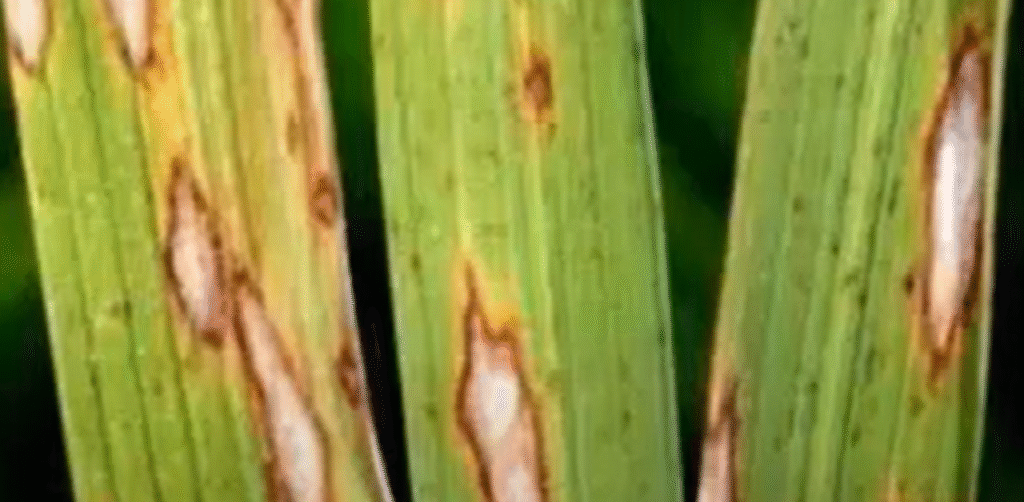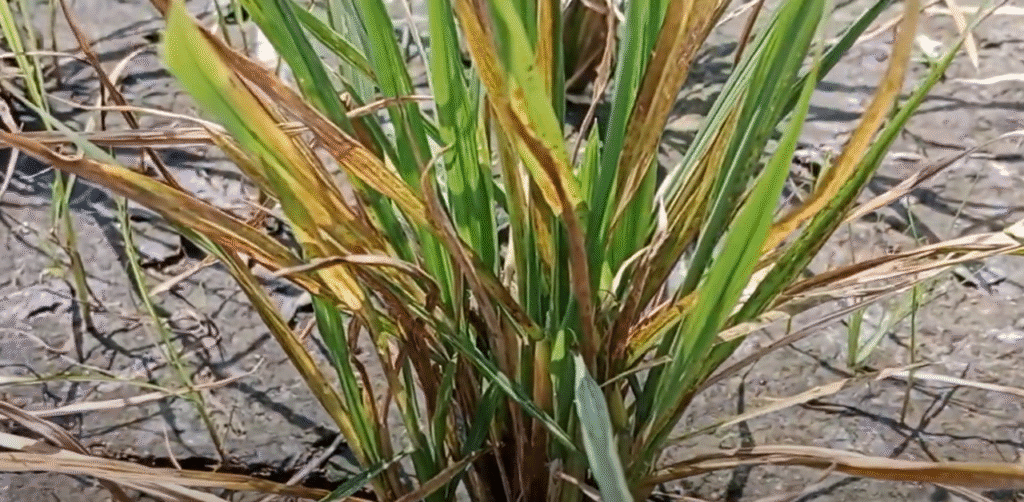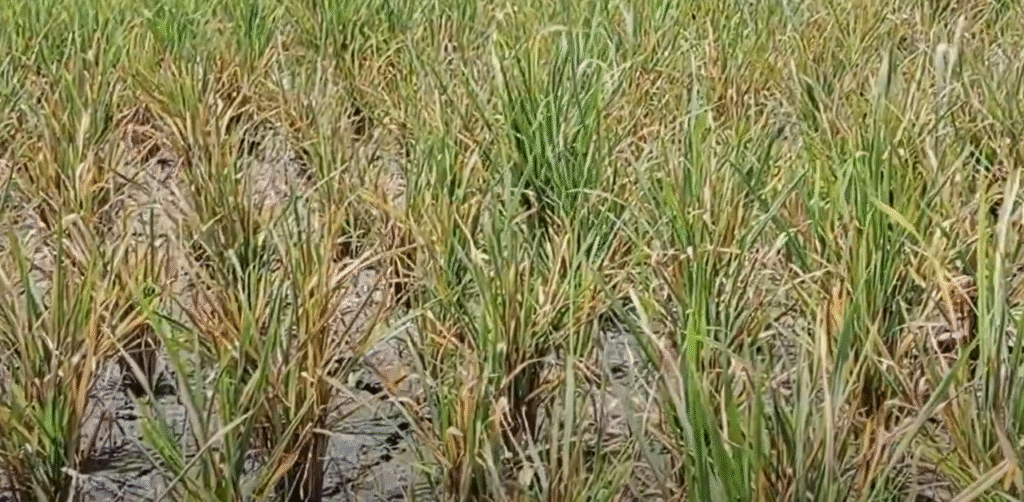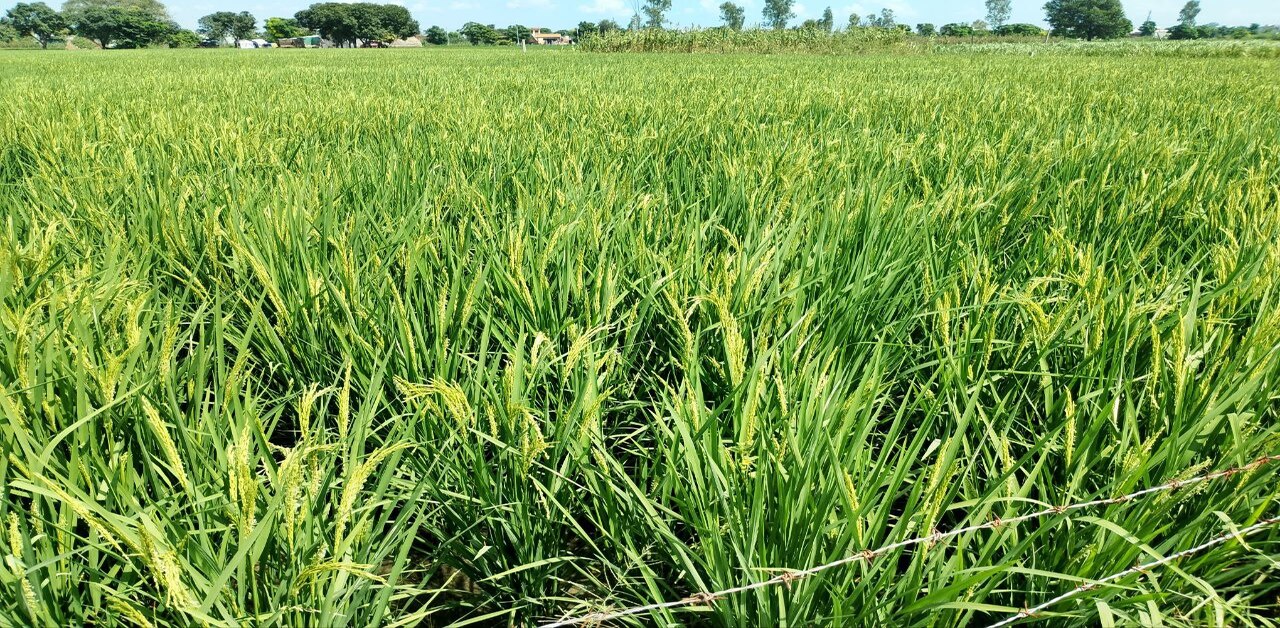Khaira disease of rice is a severe nutritional deficiency condition that is prevalent among paddy fields in some areas of India and Asia. As opposed to most other crop diseases, which are transmitted through fungi, bacteria, and/or insects.
Khaira disease is not contagious, but it is due to a lack of zinc in the soil. Khaira is a name derived from the Hindi meaning of brown or blackish and refers to the shape of the leaves of plants affected, which becomes discolored in appearance.
This disease causes stunted growth, poor tillering, and low yield unless it is handled in a proper manner. This disorder is typically observed in rice-producing areas in India and other parts of Asia, where paddy fields are often flooded, resulting in an imbalance of micronutrients.
Since it was first discovered in the Tarai region of Uttar Pradesh in the 1960s, Khaira disease has remained a menace to farmers, particularly in alkaline, calcareous, or low-organic-matter soils.
To maintain good productivity, its management needs the timely application of zinc, balanced fertilization, and good water regulation to maintain the healthy growth of crops.
Rice is a significant staple crop in the world, as it sustains nearly half of the world’s population. Nevertheless, there are challenges associated with rice production, such as diseases and a lack of nutrients, which may impact the production of rice.
In this article, we are going to discuss the Khaira disease in rice, its causes, and its symptoms and management of Khaira disease etc.
Table of Contents
What is Khaira Disease?
The name Khaira derives from the Hindi word, which translates to blackened or dark brown. It is essentially a nutritional disease, and not an infectious disease, resulting when rice plants do not receive sufficient available zinc in the soil.
Khaira disease was first detected in the Tarai region of Uttar Pradesh (India) in the 1960s, because in the Tarai region, zinc deficiency is found and has since then been reported to occur in various rice belts in South and East Asia.
The first case of Khaira Disease in Rice was reported in India in Pant Nagar, by Dr. Y L Nene.

Causes of Khaira Disease
Zinc deficiency in soil has been the main cause of Khaira disease.
This is caused by several factors:
1. Soil Characteristics
Zinc is not very soluble in high PH (alkaline soils).
The calcareous soils and those that contain excessive calcium carbonate impair the absorption of zinc.
Poor organic matter of Sandy soils can be deficient in zinc.
2. Agronomic Practices
Too much phosphate fertilizer reduces the availability of zinc.
Excessive flooding lowers oxygen levels, contributing to lower uptake of zinc.
Repeated tilling of the soil without restoring the micronutrients reduces the zinc supply.
3. Environmental Conditions
The soil temperature of the early season is low, which retards nutrient uptake.
When there are heavy rains, this can be washed away by the available micronutrients.
If you want to buy a book of “Certificate Physical and Human Geography 2nd Edition by Goh Cheng Leong, then you can click here.
Symptoms of Khaira Disease
The symptoms of the Khaira disease are extremely characteristic and can readily be identified by the farmer:
1. Leaf Discoloration: Young leaves of rice seedlings acquire brown, rusty/bronze patches which successively change to necrotic spots.
2. Stunted Growth: Plants with zinc deficiency will be short and weak.
3. Less Tillering: Affected plants yield fewer tillers and consequently yield less grain.
4. Chlorosis: Young leaves are pale, whereas older leaves are usually green.
5. Weak root penetration: The root system remains undeveloped and ineffective in taking up nutrients.
Lack of treatment may lead to massive yield losses of some 20-30 percent of the field in severe cases.

Management and Control of Khaira Disease
Proper management of nutrients and soil amendments is effective with regard to the management of Khaira disease.
The common practices that have been suggested include the following:
1. Zinc Fertilization
The most common remedy is the application of zinc sulfate (ZnSO 4 7H 2 O) at the rate of 20-25 kg per hectare.
Pre-transplanting basal application means that there is no shortage of it during the initial growth stages.
2. Foliar Spray
Quick recovery is achieved by spraying the affected crops using a 0.5 % solution of zinc sulfate (5 g zinc sulfate, 2.5 g lime/liter of water). 25 kg/ha zinc sulfate basal dose is recommended.
One or three sprays within a period of a week seems to be working.
3. Balanced Fertilization
Use of phosphate fertilizer should be avoided with a physical supplement of zinc.
Add organic material, for example, farmyard manure or compost, to make soils fertile.
4. Water Management
Also, do not allow water to stagnate too long in early crop growth.
Adequate drainage during the establishment of the seedling has enhanced the uptake of nutrients.
5. Zinc-enriched varieties are used
Losses will be reduced in susceptible areas, as varieties of rice that are resistant to zinc-deficient situations will be planted.

Importance of Management of Khaira Disease
Rice acts as the livelihood of millions of farmers, and a little drop in rice can affect food security and rural income. Through proper treatment of Khaira disease, it is ensured:
1. Higher crop productivity.
2. Better nutritional value and quality of grain.
3. Aspects of long-term soil health by balanced fertilization.
4. Stability in the economy of farming communities.
If you want to read an article about the DAPOG Method of rice cultivation in detail, then you can click on it.
Conclusion
A typical example of when the imbalance of micronutrients can be quite detrimental to crop productivity is the Khaira disease of rice.
It is not infectious like diseases, but it is a result of nutrient deficiencies in the soil, and it can be easily controlled with prompt measures.
The farmers should embrace integrated nutrient practices that involve the application of zinc, balanced application of fertilizers, and water management.
In such a way, it is possible not only to manage the issue of Khaira disease but also to make rice production eco-friendly and more profitable.

